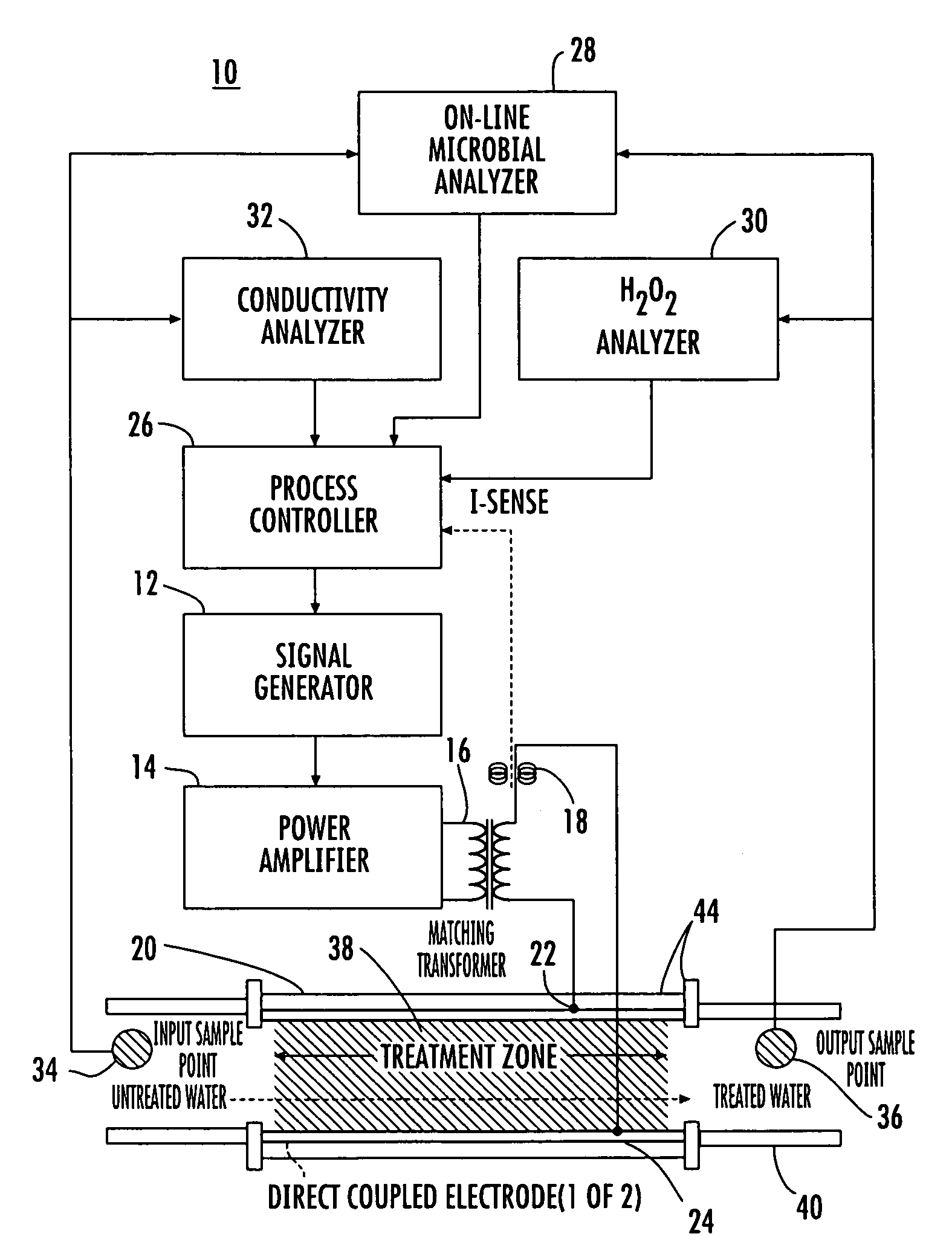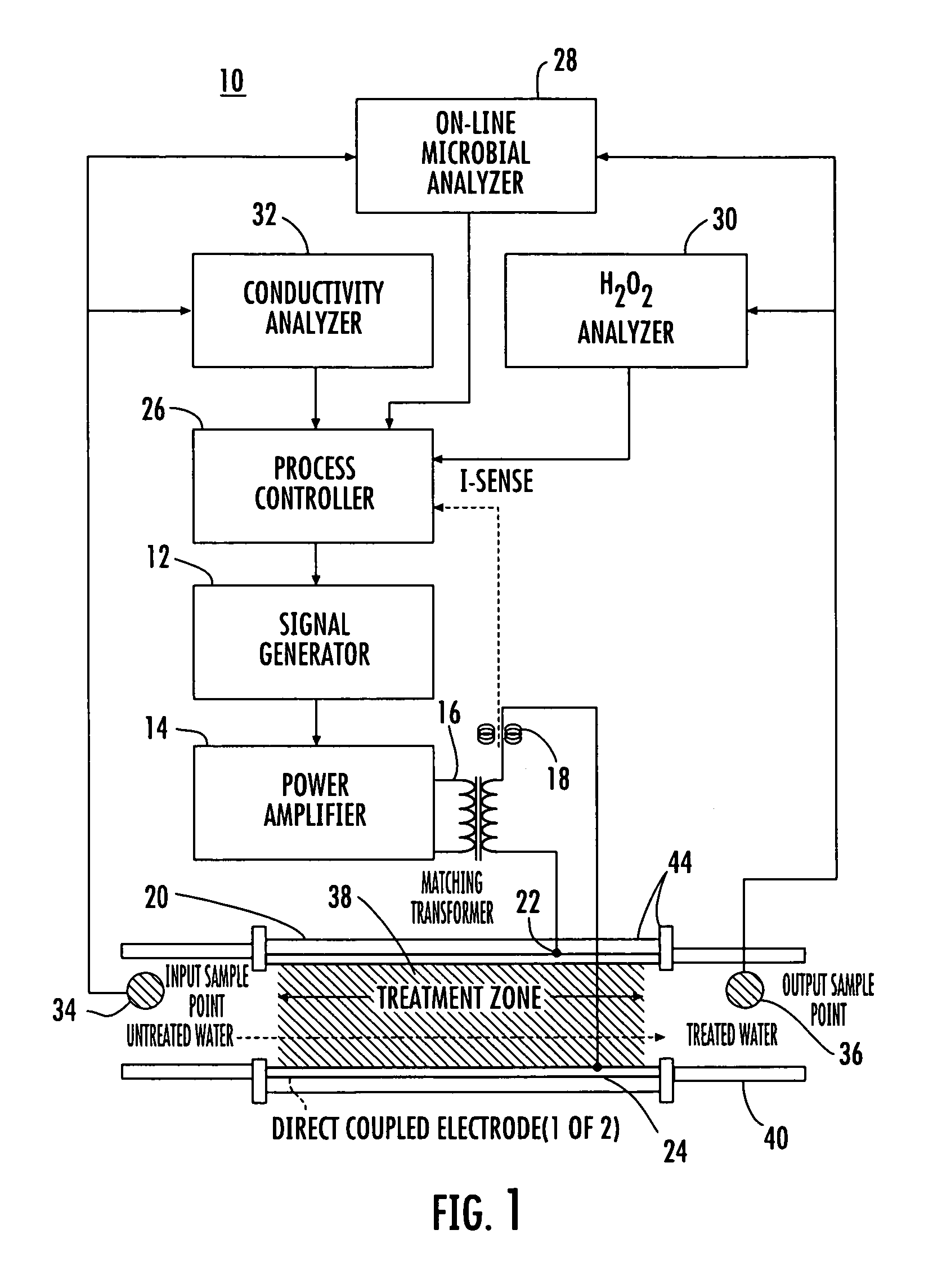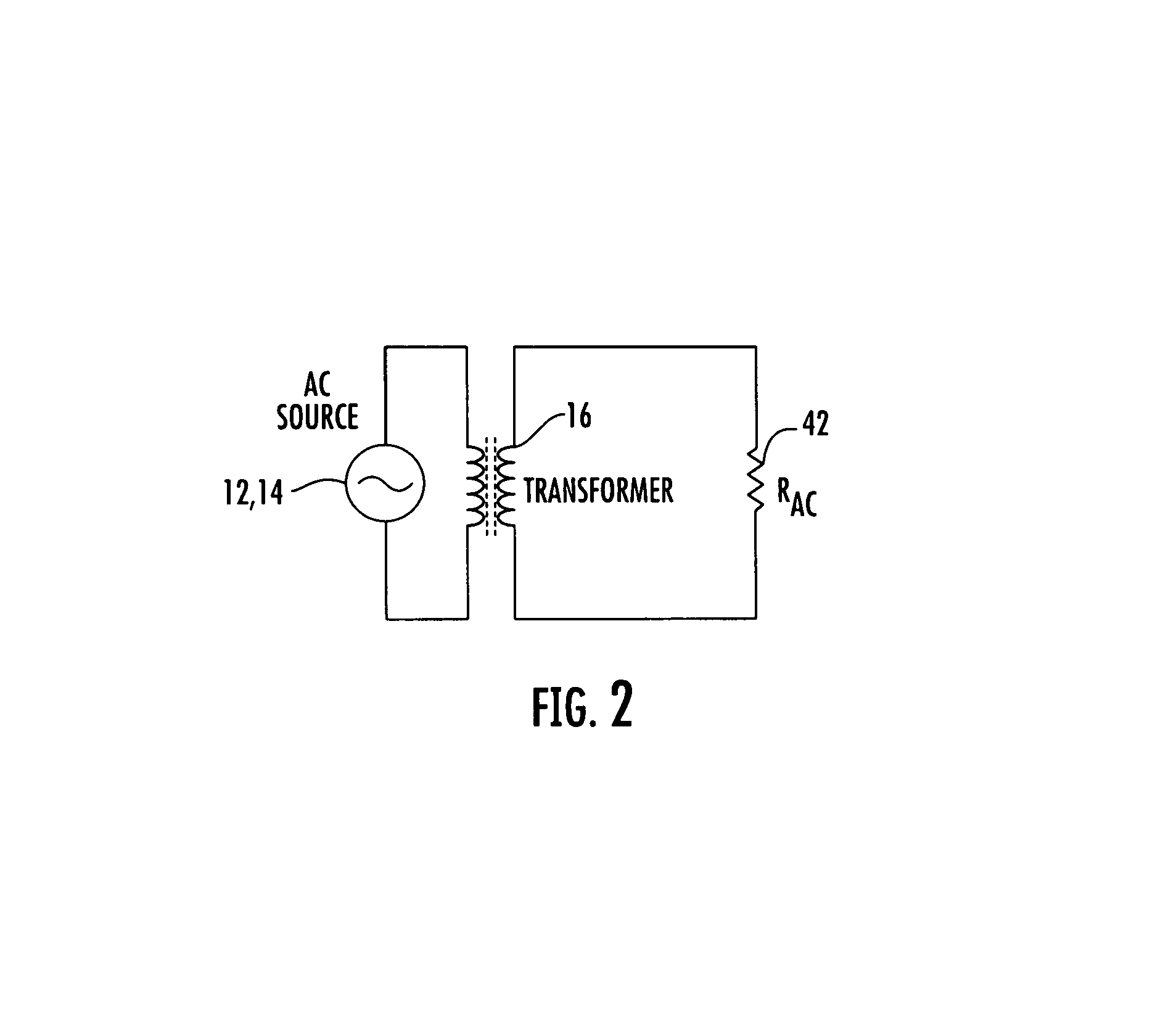Electroionic processing system
- Summary
- Abstract
- Description
- Claims
- Application Information
AI Technical Summary
Benefits of technology
Problems solved by technology
Method used
Image
Examples
Embodiment Construction
[0043]Referring to the drawings and particularly to FIG. 1, a block diagram of a direct-coupled electroionic processing system 10 in accordance with an embodiment of the present invention is shown. The direct-coupled electroionic processing system 10 comprises a high frequency AC power source 12, 14, a treatment cell 20, at least two treatment electrodes 22, 24, a process controller 26, an on-line microbial analyzer 28, a hydrogen peroxide (H2O2) analyzer 30 and a conductivity analyzer 32. A signal generator 12 supplies a high frequency (20 kHz–450 kHz) signal which is power amplified by a power amplifier 14 for input to an impedance matching transformer 16. Most high frequency power amplifiers require an impedance load of 50 ohms. A current sense coil 18 is also provided to signal the process controller 26 on the current level in the circuit. The current supplied to the treatment cell 20 preferably adapts to varying microbial loads, as detected by the on-line microbial analyzer 28....
PUM
| Property | Measurement | Unit |
|---|---|---|
| Electrical conductivity | aaaaa | aaaaa |
| Power | aaaaa | aaaaa |
| Concentration | aaaaa | aaaaa |
Abstract
Description
Claims
Application Information
 Login to View More
Login to View More - R&D
- Intellectual Property
- Life Sciences
- Materials
- Tech Scout
- Unparalleled Data Quality
- Higher Quality Content
- 60% Fewer Hallucinations
Browse by: Latest US Patents, China's latest patents, Technical Efficacy Thesaurus, Application Domain, Technology Topic, Popular Technical Reports.
© 2025 PatSnap. All rights reserved.Legal|Privacy policy|Modern Slavery Act Transparency Statement|Sitemap|About US| Contact US: help@patsnap.com



